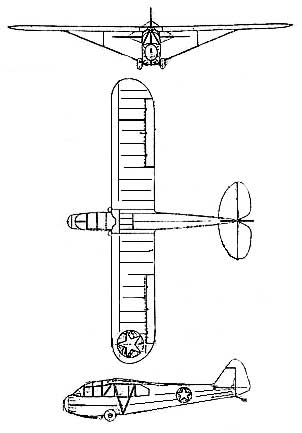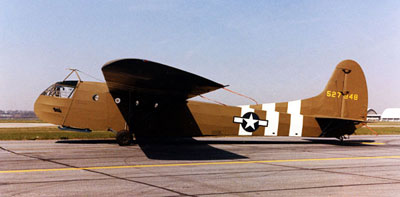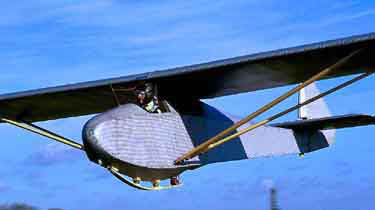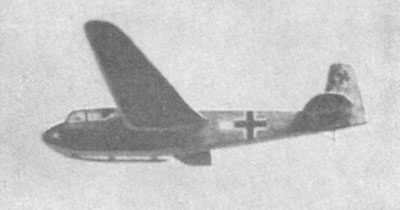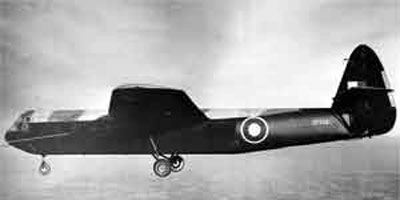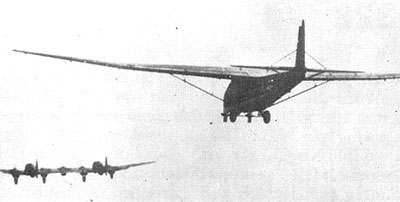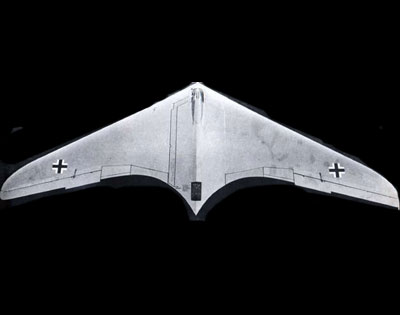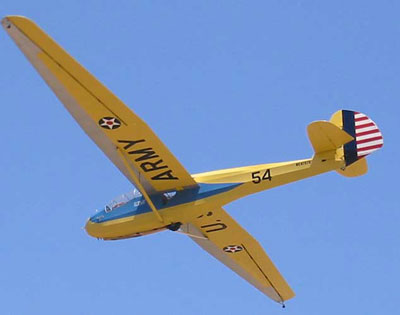Piper TG-8 WWII Training Glider
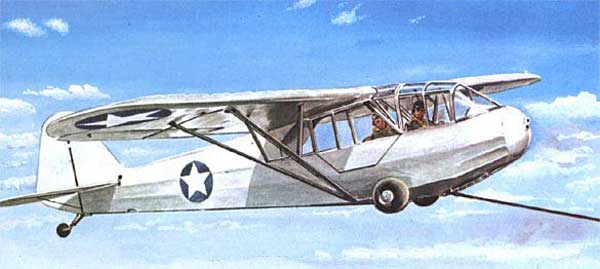
Want to train thousands of glider pilots, literally overnight? Put them into Piper Cubs, Aeroncas and Taylorcraft and make them practice gliding and landing with power off. Then graduate them to training gliders made over Cubs without engines. That's what the U.S. did in WW II, and It Worked! Then they developed actual gliders based on these light aircraft such as the Piper TG-8 Training Glider.
The reason I built the TG-8 was to give my fellow modelers a history lesson about how the TG-8's and CG-4a's were used and the difference they made in the War. To have it displayed on your site gives me great pleasure.... My current project is a 33% XTG-10. The "best glider in the world" during the 30's was a German Minimoa. Either Chet Decker or Charles Dupont brought one into the US and with it the won several World Soaring Championships, the airplane is currently on display at the National Soaring Museum at Elmira. In any event they took the airplane to the Clinton County Air Filed, by Dayton OH where we were trying to figure out how to train pilots for the CG-4's? Of course the TG-2's and XTG-10 flew like sailplanes not like the cargo gliders that had but a 7/1 glide ratio.... My XTG-10 will actually be a "fantasy" XTG-10 because the colors on the "real one" were actually quite homely. Go to the Soaring Museum web site and you'll see what I mean. In any event mine will be done in TG-2 yellow and blue with the requisite military markings. Should be spectacular when I get in done next month. Wish you well … Cubnuts aka Jim Riggle
Airplanes To Gliders and Back Again

This image is actually a 1/4 scale model done by Jim Riggle & Tex Newman...Sure looks real!
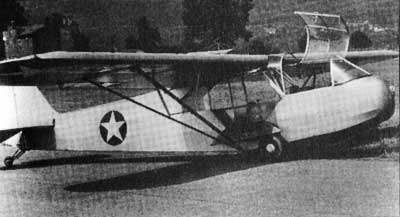 Early in World War II the Germans surprised the
world with their use of troop-carrying gliders.
The rest of the major powers were quick to take
note and some began crash programs to develop military gliders of their own.
Early in World War II the Germans surprised the
world with their use of troop-carrying gliders.
The rest of the major powers were quick to take
note and some began crash programs to develop military gliders of their own.
While troop-carrying cargo models were being developed in the United States, it was also necessary to start a glider-training program. To that end, the Army Air Corps looked to the small U.S. sailplane industry and ordered several hundred examples of certificated two-seaters that were then in production.
The order included 45 Frankfort Cinema IIs that were designated TG-1A (for training glider), 32 Schweizer SGS- 2-8s that became TG-2As, and 150 Laister-Kauffman LK- 10s that became TG-4As. The military also contracted with Schweizer for the development of 153 examples of a new two-seater specifically for military training, the TG-3A. Then, to get a fast start, it also bought up a lot of privately owned single- and two-seat sailplanes. Other manufacturers soon developed prototype trainers, but the TG-1 through -4 models were the only sailplane types ordered in quantity.
The TGs were good training sailplanes, which was fine when the goal was to develop skilled soaring pilots. The problem was that the cargo gliders the pilots were to fly were not sailplanes. They were little more than boxy aerial trailers and certainly didn't handle like dainty and sensitive sailplane trainers.
Feeling that the trainers should handle more like the cargo types, the Army tried a different approach. It had Taylorcraft, Aeronca and Piper remove the engines and conventional landing gear from their standard 65-horsepower two-seat tandem light planes and add a longer glider-type nose with an extra seat in it to maintain the balance. With no propeller requiring long landing gear legs for ground clearance, these converted light planes used two wheels right under the lower longerons to provide a ground-stable gear similar to that used by the cargo gliders instead of the single-wheel type used by the sailplanes. After testing three proto- types from each manufacturer, the Army ordered 250 production models from each: TG-5s from Aeronca, TG-6s from Taylorcraft and TG-8s from Piper. The sailplane types were soon declared surplus and stored until war's end.
The last act was a mixed blessing for America's post-war soaring movement. The surplus sailplanes put cheap and plentiful soaring equipment into the hands of the pilots, but it also stifled the development of new (and much more ex- pensive) models for more than a decade.
The converted light planes didn't work out too well as training gliders either, so the program was reoriented to give most of the initial glider training in light planes, after which the pilots transitioned to the cargo gliders. The converted light planes also survived in quantity to the end of the war, but did not get the warm welcome the surplus sailplanes enjoyed. There was just no place in the soaring movement for the odd three-seaters.
That did not hold up their sale, however. Except for the nose and landing gear they were still standard light-plane airframes and would be reconverted to such by addition of the necessary engines, landing gear and other parts. So, having been derived from airplanes in the first place, many of the TG-5s, -6s and -8s were reconverted to airplanes.
One special feature that had been added to the glider configuration was a wing spoiler system. Pilots who had used similar devices fitted to some of the Army liaison planes thought they were great for steep approaches, but the FAA insisted that they be deactivated when the gliders became civilian airplanes. The key word there was "deactivated," not "removed," and it is interesting to note how many of those allegedly deactivated spoilers later managed to pop open at very convenient times.

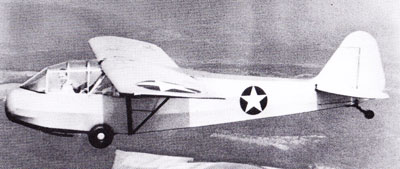 A new weapon of war came into play as the sun began to rise
on the morning of May 10, 1940. Nine German gliders carrying a
shock force of seventy-eight, specially trained glider troops
landed within the outer walls and atop the gun positions of the
"impregnable" Belgian fortress of Eben Emael. In less than half
an hour, these German assault troops, with a loss of only six
dead, had seized control of this key position manned by over
750 Belgian soldiers.
A new weapon of war came into play as the sun began to rise
on the morning of May 10, 1940. Nine German gliders carrying a
shock force of seventy-eight, specially trained glider troops
landed within the outer walls and atop the gun positions of the
"impregnable" Belgian fortress of Eben Emael. In less than half
an hour, these German assault troops, with a loss of only six
dead, had seized control of this key position manned by over
750 Belgian soldiers.
Almost simultaneously, gliders landed beside three key bridges spanning the Meuse River. Two of these bridges were seized before defending Dutch troops had time to ignite demolition charges. When these swift, silent glider assaults opened the way for the German forces to rapidly advance through Belgium and Holland and on into France without having to make a frontal attack against the Maginot Line, military commanders around the world suddenly realized that a new dimension had been added to warfare. This knowledge was not overlooked in the United Stales, and on February 25, 1941, General Hap Arnold Chief of the Army Air Corps, directed his staff to prepare by April 1 st a study on the desirable characteristics of a military transport glider.
Shortly afterwards, in April 1941, Captain Marc Mitscher Assistant Chief of the U.S. Navy's Bureau of Aeronautics directed the procurement of a personnel and equipment carry ing glider for the Navy and Marine Corps. Even as preparations for this new project were begun another blow was struck from the sky. At 7:15 am, on the morning of May 20, 1941, fifty-three German troop gliders began landing on the island of Crete in the first wave of a massive airborne invasion. British and New Zealand troops were unsuccessful in trying to defend the island against this spectacular German air assault, and the fall of Crete signaled that airborne warfare had come of age.
It was in this same month of May 1941, that the United States Army Air Corps placed its first orders for troop transport gliders. The initial order was for an eight place glider, the XCG-1, and a fifteen place glider, the XCG-2, from Frankfort Sailplane Company. This was followed by several others in June 1941 for 8 and 15-place gliders from each of several companies, These were the XCG-3 and XCG-4 from Waco Aircraft Company; the SCG- 5 and XCG-6 from the St. Louis Aircraft Corporation; and the XCG-7 and XCG-8 from Bowlus Sailplanes, Inc. With the exception of Waco, these companies were civilian sailplane manufacturers who designed and built gliders that were more akin to lightweight, high performance sailplanes than to military troop transporting vehicles. Again, with the exception of Waco, they all failed their structural tests.
Waco was a well established light airplane manufacturer that had never previously built a glider or sailplane, and Waco's initial gliders definitely showed they were not kin to sailplanes. They looked like a cross between a lightplane and a boxcar! But despite their awkward angles, the Waco gliders incorporated the features needed for high production military assault gliders. 100 CG-3As were manufactured by Commonwealth Aircraft Corporation (formerly Rearwin, another experienced lightplane manufacturer), while Waco and fifteen other companies built a phenomenal total of 13,909 CG-4As.
Meanwhile, the U.S. Navy was undergoing a similar program for the development of transport gliders for carrying Marines" The Navy program involved both land and flying boat troop and cargo gliders. Ironically, although mass production of transport gliders was soon underway, none of the U.S. military services had any glider pilots nor had they developed any plans for training them.
In the summer of 1945, the U.S. Army and the U.S. Marine Corps sent a few officers to commercial sailplane schools to learn to fly gliders. These commercial schools were small and scattered around the country. Most had only a few and some just a single sailplane. The majority could barely handle between four and twenty students at any one time. Nevertheless, the Army and Marines enrolled potential glider pilots in civilian schools all over the country to learn the basics of soaring. These pilots became the instructors for military training school. At the same time, the services started buying up from private owners every two-seat sailplane that could be found and also began ordering new two-seat sailplanes to equip the as yet to be opened military glider schools. This resulted in training schools equipped with multitudes of different types of sailplanes, including some foreign built and even some homebuilts.
Sailplane manufacturing was a cottage type, one hangar industry in this country, used to building one sailplane at a time. Even though large government orders were available, the existing sailplanes were just not designed for mass production. Furthermore, there were no large plants to produce them in. Typical of the sailplane builders was the Schweizer Aircraft Corporation of Elmira, New York. At the beginning of World War II, the company consisted of the two Schweizer brothers, Paul and Ernie, along with two employees. From 1929 until 1941 when they received their first military order, Schweizer had built a grand total of six single place gliders of five different designs and four two place gliders of one design. When they were handed contracts for a large number of training gliders, they were hardpressed to produce. But Schweizer, unlike most of its sister sailplane firms, was able to expand and deliver a number of gliders for the military. ln all, Schweizer built 35 TG-2s and 113 TG-3s for the Army plus 13 LNS-Is (same as TG-2)for the Navy and Marine Corps. These figures include the XTGs also.
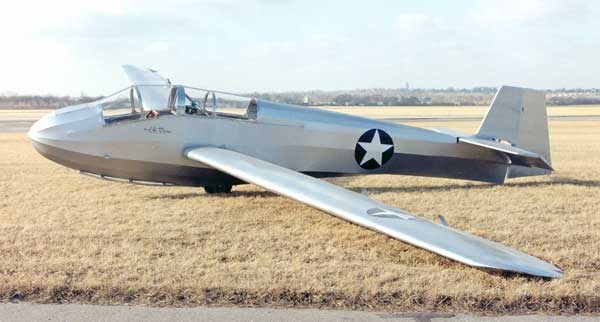
Schweizer TG-3 training glider
The TG-2 was a standard Schweizer commercial SGS 2-8 two place sailplane. The TG-2 had a welded chrome moly frame fuselage. The wing was of aluminum monospar construction. The entire airframe was fabric covered, giving it an empty weight of just 450 pounds. The shoulder mounted wing had a span of 52 feet, which gave it a glide ratio of 23.5 and a sink rate of just over 2 feet per second.
The TG-2 was followed into production at Schweizer by the TG-3A which had the wing moved down to a mid-wing position and the span increased to 54 feel. The TG-3A had a glide ratio of 24. The TG-2 and TG-3 were typical of the training gliders produced by sailplane manufacturers.
By the spring of 1942, it was becoming obvious thai the sailplane companies could not turn out enough training gliders and that the Army did not have the instructors or facilities to turn out the required number of pilots to man the cargo gliders. About the same time, the first cargo gliders were being delivered and army cadets who had trained on sailplanes were experiencing severe problems when transitioning to them. The Waco-built CG-4A behaved nothing like your typical sailplane. Sailplanes spent only minutes on the end of a towrope while they were pulled to altitude. Then the long-winged sailplane could stay up for hours by obtaining lift from air currents and thermals. The sailplanes had glide ratios in the order of 25 to 1, that is they flew 25 feet forward for every foot of altitude lost. The cargo glider on the other hand was lowed all the way, possibly for hours, behind the towplane until just short of or above its target. Once at the target area, it was released and descended rapidly-to a landing. Most cargo gliders had glide ratios of around 8 or 10 to 1, or only about one third of that of a sailplane, and then only in the hands of an experienced glider pilot. lt was no wonder then that the newly trained pilots were coming to grief when faced with the packing crate-like cargo gliders!
Both major problems of the glider program, (1) not enough glider pilots being turned out and (2) the existing training sailplanes not having the same flight characteristics as the transport gliders, were solved indirectly by one major move. This occurred when the Army asked the Civil Aeronautics Administration (CAA) lo help out with glider pilot training' The CAA had been giving primary flight training to student powerplane pilots since 1939, under the Civilian Pilot Training Program (CPTP). The CPTP was renamed the War Training Service (WIS) in 1942, after the U.S. got into the war. The CPTP and later WTS program consisted of civilian flight schools which were under contract to and supervised by the Civil Aeronautics Administration to give flight training to selected students in preparation for their need by the military. Once war was here, WTS cadets upon graduation went straight into military basic flight training.
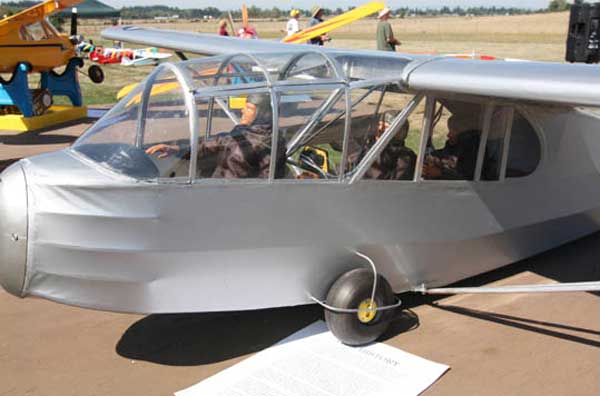
This image is actually a 1/4 scale model done by Jim Riggle & Tex Newman
Other World War II Gliders
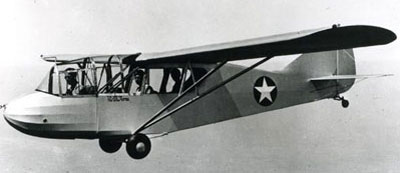 Aeronca TG-5 |
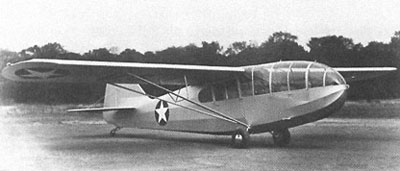 Taylorcraft TG-6 |
